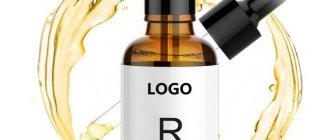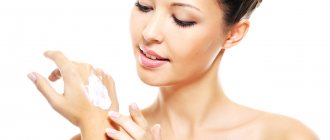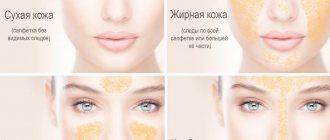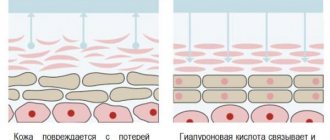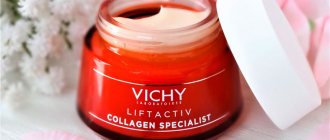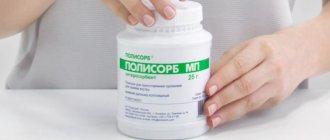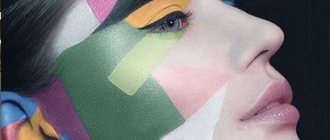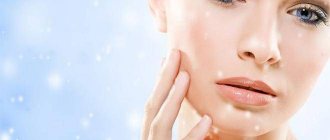Few people think about the fact that the sun's rays can affect us both positively, helping to produce vitamin D in the body and improving the body's immunity, and negatively, causing irritation, dermatitis, burns, photoaging and even oncology. We will tell you how to protect your skin while exposed to ultraviolet light in our review.
Features of sunscreens
SPF (Sun Protection Factor) is translated from English as sun protection factor. Products bearing this marking block the harmful effects of ultraviolet B rays.
Prolonged exposure to the sun can have adverse effects on the body:
- the appearance of sunburn;
- premature aging of the skin (under the influence of ultraviolet rays, collagen is destroyed and the skin withers);
- melanoma (skin cancer). A large amount of ultraviolet rays can contribute to changes in the DNA of cellular structures and the formation of malignant tumors.
In order to get the maximum benefit from the sun, you need to stay in the sun for no more than 15 minutes, and then apply protective products to your skin. The spf 30 or 50 designations determine the duration of exposure and equally prevent the negative effects of ultraviolet radiation.
The duration of action of sunscreens is determined by multiplying the average exposure to the sun (about 15 minutes for Slavic appearance) by the number of spf (20,30 or 50). The maximum effect of the product lasts 7.5 hours (15*50).
What should be included in a sunscreen?
Sunscreen creams may contain two types of components:
- special filters (created on the basis of organic compounds) - have the maximum effect, but despite this, they often become the culprits of allergic intolerance. Cosmetologists advise avoiding sunscreens that contain retinol, palmitate or padretinol. As it turned out, these components provoke the occurrence of cancer;
- screens – reflect solar radiation due to the presence of inorganic solid microparticles.
Also, high-quality sun protection products should be enriched with useful components that normalize the natural process of regeneration of epithelial cells. These ingredients include panthenol, plant extracts and non-comedogenic nourishing oils.
Based on recent research, scientists have proven that vitamin A, which is part of protective creams, and its derivatives, when interacting with ultraviolet radiation, can cause skin cancer.
Retinol is considered a powerful antioxidant with an effective anti-aging effect. However, for greater safety, it is recommended to use skincare products containing vitamin A at night.
Composition of sunscreen cosmetics and types of filters
Depending on the type of components contained in the composition, sunscreens with spf are conventionally divided into 2 groups:
- chemical filters (Sunscreen) have the ability to adsorb ultraviolet radiation and convert it into safe thermal radiation. Such compounds include homosalate, octisalate, avobenzone, oxybenzone, but they are moderately toxic substances and require careful use;
- physical filters are substances of mineral origin (titanium dioxide, zinc oxide). Such compounds have the ability to scatter ultraviolet rays and protect the skin from the effects of spectrum A and B rays. The main advantage is absolute safety for the body.
Products containing natural ingredients contain large particles, so the cream leaves noticeable white streaks on the skin. Therefore, some manufacturers began to use chemical filters, but it is worth remembering that they can penetrate deeply into the skin and negatively affect the general condition of the body.
An alternative is to select an effective product with a combined composition, which has been tested in well-known laboratories and is safe for the body. It is from this assortment that you need to choose the right cream for yourself.
Additional components of sunscreens are designed to maximize skin hydration and nutrition (glycerin, hyaluronic acid, essential oils), so when using them you can get gentle skin care.
Organic UVA-UVB filters –
The UVA-UVB filters listed below are the best available in sun protection products today. Mexoril XL, Tinosorb-S and Tinosorb-M - can be found in good concentrations only in high-quality and expensive cosmetics.
- Mexoril® XL – (synonym – drometrizole trisiloxane, Drometrizole trisiloxane).
This is probably one of the best and safest organic filters, which protects well from UVB radiation, as well as the entire spectrum of UVA radiation (and especially well from UVA-1). The Mexoril XL filter is a patented development of L'Oreal, and you can only find it in cosmetic brands owned by this company. Such brands include, for example, La Roche-Posay, Vichy, SkinCeuticals. Moreover, in less expensive cosmetics sold directly under the L'Oreal brand, you can find another Mexoril, namely Mexoril SX. This is also a good and safe organic filter, but it does not protect against the entire spectrum of UV radiation (but mainly against UVA-2 radiation). In more expensive products, these 2 filters are usually combined together, because these complement each other well. Mexoril XL and SX have very good photostability and do not affect the body. - Tinosorb-S – (synonym – Bemotrizinol, Bemotrizinol).
Full name: Bis-ethylhexyloxyphenol methoxyphenyl triazine. Tinosorb S is a broad-spectrum organic filter, protecting against both UVB and UVA radiation. Moreover, its maximum effectiveness occurs precisely with UVA-1 and UVA-2 radiation. This filter is highly photostable: even when exposed to UV radiation equivalent to 50 MED (minimum erythema dose), 98.4% of the filter molecules remain intact. Most often, this filter is additionally combined with the Tinosorb-M filter, as well as ethylhexyltriazone. In general, Tinosorb S (as well as Mexoril XL) is one of the most powerful organic filters. - Tinosorb-M – (synonym – Bisoctrizole, Bisoctrizole). Full name: Amethylene bis-benzotriazolyl tetramethylbutylphenol. This is a unique filter against UV radiation, because... it is a hybrid, simultaneously possessing the properties of both a mineral and an organic filter. The range of the ultraviolet spectrum covered is both UVB and UVA (both UVA-1 and UVA-2). This filter has excellent photostability and has virtually no effect on the body.
Protection from other types of radiation
In addition to ultraviolet rays of the B spectrum, the sun emits other levels of impact on the body:
- short waves of the C spectrum with a length of 100–280 nm, which are not harmful to the body and cannot penetrate the ozone layer;
- long waves of spectrum A with a length of 320–400 nm are able to penetrate deep into the skin through clothing and glasses, even in cloudy weather. However, they are not dangerous to the body and can only cause redness and sunburn with prolonged exposure to the sun;
Obtaining maximum protection from sunscreen depends on using a combination product containing spf and UVA PPD in a 3:1 ratio.
Organic UVB filters –
UVB radiation has high intensity only in summer, and specifically in the time range from 10 a.m. to 4 p.m. Therefore, if you want to avoid getting sunburnt on the beach, these filters are the most important, but at the same time they are not able to protect your skin from photoaging (which is caused by UVA radiation).
1) Ethylhexyl triazone – synonym – Uvinul T-150. This is an organic filter that well blocks UVB radiation (from 280 to 315 nm), and also, to a small extent, UVA-2 rays. It is often combined with the Tinosorb-S broad spectrum filter. Ethylhexyltriazone has a fairly high safety profile. Recommended concentration up to 5%.
2) Iscotrizinol – full name – Diethylhexyl butamido triazone. This organic filter blocks UVB radiation well, as well as to a small extent UVA-2 radiation (peak at 314 nm). Has a good safety profile.
3) Aminobenzoates – the earliest sunscreens used para-aminobenzoic acid (PABA), which stained clothing and caused skin irritation. Therefore, instead of traditional PABA, its derivatives began to be used - 1) octyldiethyl-PABA, 2) padimate O (Padimate O). It is believed that not only PABA itself, but also all its derivatives significantly increase the risk of developing photoallergic dermatitis. At the moment, the use of aminobenzoates has been almost completely replaced by the next group of filters - cinnamates.
4) Cinnamates – one of the most commonly used UVB filters, which is included in not only creams, but also makeup products, lipsticks, and hair conditioners, is Octyl methoxycinnamate. Its other names are ethylhexyl methoxycinnamate, octinoxate, and OMS. This substance is poorly soluble in water, and therefore it is especially often included in sun protection products labeled “water resistant.” Most often it is combined with another organic filter - oxybenzone.
Cinnamates have a number of significant disadvantages. For example, they do not have very good photostability, and therefore, without combination with photostabilizers, they quickly decompose in the presence of sunlight. Also, cinnamates easily penetrate the skin and also lead to the formation of free radicals. They cannot be used by children and pregnant women, because... they may cause estrogen-like side effects, causing statistically significant changes in testosterone and estradiol levels. Sometimes they can cause photoallergic dermatitis.
5) Octocrylene - this filter can be found in almost all sunscreens of low and medium price categories. This is a rather weak organic filter, which in good products will not be used as the main active component. But, if you start looking at the compositions of different products, you will see that in many cheap products octocrylene is the main component in a very high concentration (or in combination with cinnamates). But its presence in higher quality products is explained by the fact that it has high photostability and can act as a photostabilizer for other organic filters.
Octocrylene can also be used in sun protection products as an additional UVB filter (but it also has little activity against UVA-2 radiation). Despite its widespread use, this filter has a number of disadvantages. It easily penetrates the skin and leads to the production of free radicals. May act as a photosensitizer, contributing to the development of photoallergic dermatitis. Octocrylene is the most common component of cheap sun protection products, where it is usually found in very high concentrations (up to 10%) - usually in combination with cinnamates or salicylates.
6) Salicylates - salicylates are fairly weak absorbers of UVB radiation, and therefore they are used either in high concentrations (about 4%) or to enhance other UVB filters. They also tend to reduce the photodegradation of UV filters such as oxybenzone and avobenzone. In sunscreen products, you can find the following salicylates - Octyl salicylate or Octisalate or 2-ethylhexyl salicylate, Homosalate, and triethanolamine salicylate. These components are considered safe; cases of allergic reactions to salicylates are extremely rare.
7) Phenyl-benzimidazole-sulfonic acid –
This component is used only for protection against UVB radiation (it also has little activity against UVA-2 radiation). This filter has a good safety profile and cases of allergic reactions are extremely rare. In the ingredients list, this component will be written as Phenylbenzimidazole sulfonic acid (24stoma.ru).
Indications for using sunscreen spf 50
The selection of a suitable sunscreen should be carried out in accordance with the phototype of people, divided into categories:
- phototype No. 1 (blond people with red hair and freckles on the face, as they quickly get burns on the body after a short exposure to the sun for no more than 7-10 minutes);
- phototype No. 2 (brown-haired, fair-haired, blonde, with fair skin without freckles, who should not be in the sun for more than 10 minutes);
- phototype No. 3 (dark blond, brown hair and olive skin color. Such people tan well and can be safely exposed to the sun for about 30 minutes);
- phototype No. 4 (pronounced olive skin color and dark hair. People of this type tan easily and can be in the sun for about 60 minutes without problems);
- phototype No. 5 (brunettes with dark skin who are not susceptible to burns and can be in the sun for about 1.5 hours without the negative effects of ultraviolet radiation);
- phototype No. 6 (this type includes African Americans who are naturally maximally protected from exposure to ultraviolet rays. They can use protective equipment only after prolonged exposure to the sun).
The first 2 phototypes of people need constant use of sunscreen and exposure to the sun for a long period of time.
Indications for the use of creams with spf 50 level:
- sensitive facial skin;
- children of different ages, when the skin is not yet formed and needs additional protection;
- excessive passion for tanning;
- taking antibiotics;
- recovery after plastic surgery and some cosmetic procedures (skin whitening, peeling);
- a large number of moles on the body and increased pigmentation;
- predisposition to the development of cancer processes in the body.
In other cases, such creams should be used during a beach holiday or a long stay under the scorching sun.
Noni Care - reliable protection for lips from UV rays
You need to protect not only your skin, but also your lips! You don't want wrinkles around the mouth and shriveled lips from lack of moisture? Girls with such problems are increasingly found on the streets of the city, and the reason is insufficient protection of their lips from UV rays.
Contains coconut, olive, shea, cocoa oils, vitamins, wax, and various plant extracts. There are no chemicals in the composition! The manufacturer claims that Noni Care balm protects against age-related folds on the lips, dryness and loss of lip volume. Recommended to use all year round!
Cost - about 200 rubles
Personally, I chose Levrana cream for myself, I will write a detailed review on it separately, after testing its strength under the scorching sun!
The best creams
The ranking of the best sunscreens with SPF 50 is discussed in more detail below.
- Avene Mineral Cream SPF 50
Combined action sunscreen with natural ingredients and a minimum amount of chemical filters. As an effective moisturizer, the composition contains thermal water, which has a calming effect.
The cream is suitable for children and is waterproof. The product is applied to the skin before direct exposure to the sun. A 50 ml package costs 1000–1100 rubles.
- La Roche Posay Anthelios XL
A light consistency fluid for the face with spf 50 b ppd 42 containing chemical and physical filters. The composition does not contain fragrances or parabens, and the product is non-comedogenic. The cream is applied to the required areas of the skin before direct exposure to ultraviolet radiation. A package of 50 ml and costs 1500–1700 rubles.
- Garnier Ambre Solaire Expert protection
Sunscreen with spf 50, which blocks the A and B spectrum well with vitamin E as an additional component. Contains no fragrances or parabens. Application does not cause an allergic reaction.
The cream is waterproof, has a volume of 50 ml and costs 250–300 rubles, so it can be classified as an effective and budget-friendly product.
- Medium Holy Land Age Defense CC Cream
Anti-aging CC cream with high protection against ultraviolet rays. This product is classified as professional cosmetics, which have positive reviews from qualified cosmetologists and makeup artists.
The main components of the composition (mineral oil, zinc oxide, Gingko Biloba extract, camellia). The product contains parabens, so it is best used only in the summer. A 50 ml package costs 1000–1200 rubles.
- Floralis face cream spf 50 “Healthy sun”
An effective sunscreen made in Belarus with a good composition, which has a considerable number of positive reviews. One of the main disadvantages of the cream is the presence of parabens.
At the same time, the cream contains a considerable number of useful substances, antioxidants, which have a positive effect on the skin. The volume of 1 package is 50 ml, and the average cost is 200–250 rubles.
- Pure line sunscreen for face and body spf 50
Anti-tanning sunscreen for the face from the budget category of domestic production is suitable for children and adults. D-panthenol and aloe juice in the composition have a tonic and soothing effect on the skin.
When applying the cream, small wounds on the skin heal well and the regenerating properties are enhanced. Aloe juice has the ability to provide good hydration and eliminate various redness and irritations. The cream has been tested and meets all necessary EU standards. Cost 180–220 rubles.
- Water Lover SPF 50, Biotherm
One of the effective sunscreens with SPF 50, which contains only natural ingredients and protects against sunburn. During application, it is important to distribute the product evenly over the surface of the skin.
The cream has a large number of positive reviews, but is presented in the line of expensive products with a cost of 2000–2000 rubles.
- L'Oreal sunscreen face cream spf 50
The active components of the composition in combination with the Mexoryl SX complex provide maximum sun protection and prevent the appearance of age spots and premature aging of the skin.
Vitamin E in the composition eliminates the effects of free radicals, moisturizes and nourishes the skin. Jasmine extract has a pronounced rejuvenating effect and smoothes expression lines and deep wrinkles. The cream is applied to the skin immediately before leaving the house. Cost 800–1000 rubles.
- Laura anti-aging face cream with peptides spf 50
Cosmetics containing peptides have become innovative inventions that significantly rejuvenate the skin and prevent the natural aging process. Laura cream was developed by famous Swiss cosmetologists and tested in clinical studies.
Studies have found that women aged 50 to 6 years have noticeably improved facial skin after regularly applying the cream. The product is best applied in the morning to cleansed skin as a caring cosmetic. Cost 350–500 rubles.
- Vichy sunscreen face cream spf 50
Sunscreen that has a maximum level of protection against ultraviolet radiation due to the content of three active filters. The components of the composition (epirulin, glycerin) increase resistance to sunlight and moisturize the skin well.
The cream is hypoallergenic and is best applied immediately before going outside, 10–15 minutes. A second coat should be applied after swimming or rinsing off the product. Cost 1500–1700 rubles.
- Faberlic sunscreen for face SPF 50
A sunscreen cream that nourishes and moisturizes the skin even under direct exposure to ultraviolet rays. The non-greasy consistency of the product is easy to apply to the skin and is quickly absorbed.
The components of the composition provide the necessary effect:
- beeswax restores skin protection, softens and restores it;
- Vitamin E smooths out deep wrinkles and is an antioxidant by nature;
- Wheat proteins protect the dermis from ultraviolet radiation and restore the skin's water balance.
The cream is suitable for daily use as a care product. Cost 250–300 rubles.
- Clinique Sun spf 50
Sunscreens from this series are made using special SolarSmart technology (skin protection from ultraviolet radiation in a ratio of 3:1), which ensures the maximum degree of effectiveness of these cosmetics.
The cream protects well from the effects of rays of two spectra A and B in summer and spring. The product is applied 20 minutes before going out into the open sun, excluding the area around the eyes. Cost 1000 rubles.
- Hydrolipid protective face cream for adults and children Pharmaceris SUN PROTECT 50+
Sunscreen intended for fair, sensitive skin after various cosmetic procedures (deep peeling). The skin is 98% protected from the negative effects of ultraviolet radiation.
The special formula of the cream prevents the appearance of sunburn and age spots. Shea butter in the composition nourishes and moisturizes the skin well. Cost 700–800 rubles.
- Uv Beauty Shield Spf 50 from Yves Rocher
A good sunscreen produced by the famous Yves Rocher brand has a light consistency that is quickly absorbed and leaves a pleasant feeling on the face. The convenient bottle can be completely used in one summer season.
The cream provides good protection against harmful ultraviolet rays and prevents premature skin aging due to the presence of natural filters. Cost 1000–1200 rubles.
- Oriflame NovAge SPF 50 UVA/PA++++
Anti-aging sunscreen cream provides comprehensive skin care and is intended for sensitive skin. It contains useful vitamins and substances that help moisturize and nourish the dermis.
Jojoba oil restores the skin well and eliminates dryness. The cream is best applied in the morning after using your main moisturizer. Cost 1000–1100 rubles.
- SolBianca sunscreen for face and body SPF 50
The cream contains a UVA/UVB filter, which protects light and sensitive skin well from ultraviolet radiation. Vitamin E smoothes wrinkles, panthenol has a regenerating effect, Shea butter moisturizes, nourishes and eliminates dryness.
The product has a water-resistant consistency and does not contain alcohol, so it is convenient to use while bathing. It is applied 15 minutes before going outside. Cost 350–400 rubles.
- BB cream Cosmia for face waterproof SPF 50
The BB cream has a light texture, but at the same time hides skin unevenness well, creating a uniform complexion tone. The satin finish provides the skin with a delicate glow. The product can be applied to the décolleté area.
The unique formula protects the skin from 2 radiation spectra (A and B). After application there are no unpleasant sensations. The product is in demand among consumers. Cost 450–500 rubles.
- Dior Bronze Face Sunscreen SPF 50
The unique texture of the cream creates a velvety coating on the surface of the skin with a shimmering blur effect. When applied, the product simply melts into the skin, but does not leave a sticky feeling. The active components of the composition prevent premature aging of the skin and protect it from exposure to ultraviolet rays.
The effect of exposure helps to ensure a uniform tan that is safe for health. The cream is applied to cleansed skin in a thin layer. Cost 3200–3500 rubles.
- Waterproof cream Biocon Sun SPF 50
A budget cream made in Ukraine that is well absorbed into the skin and does not leave a feeling of stickiness on the body, providing maximum protection from ultraviolet rays.
The product is intended for sensitive skin, preserves the tattoo on the body and prevents premature aging of the skin. Cost 200–250 rubles.
- Maestro UV Skin Defense Primer, SPF 50 PA++, Giorgio Armani
Makeup base with high spf 50 provides maximum protection, stabilizes collagen production (smoothness, elasticity and firmness of the skin). The product can be applied to the skin as daily care. Cost 1000–1200 rubles.
Comparison table of characteristics
For a more clear comparison of the parameters of cosmetic products, let’s present our seven in the table.
| Name | A country | Form | Package | Skin type | Age | Volume, ml | Weight, g |
| Bioderma Photoderm AR Tinted spf 50+ | France | cream | tuba | All | 20+ | 30 | 45 |
| Belita-Vitex Solaris spf 50 | Belarus | cream - emulsion | tuba | All | 18+ | 100 | 120 |
| Avene Mineral Cream SPF 50 | France | cream | tuba | sensitive, atopic | 3+ | 50 | 95 |
| La Roche Posay spray Anthelios XL | France | spray | bottle | oily, sensitive, normal | 3+ | 200 | 220 |
| Biore UV Aqua Rich SPF 50 | Japan | essence | tuba | All | 3+ | 50 | 75 |
| Clarins UV Plus Anti-Pollution SPF 50 | France | fluid | bottle | All | 20+ | 30 | 60 |
| Uriage Bariesun mineral creme SPF 50+ | France | cream | tuba | All | 3+ | 100 | 120 |
How to use it correctly
To get the maximum effect from applying sunscreen, you must follow some recommendations:
- the cream must be applied to the face, hands, and décolleté within 20 minutes so that all the active components of the composition take effect and create a protective barrier on the skin;
- using the required amount of cream, since exceeding the dosage will not give the desired result and will only clog the pores on the skin;
You may be interested in: How to apply sunscreen on your face - features of summer make-up
- the cream should be applied as a base for makeup if you plan to use decorative cosmetics;
- reapply the cream during the day if necessary.
conclusions
- Products with SPF 50, unlike products with a lower factor, may have a thicker, greasy consistency. After application, such creams leave an uncomfortable greasy film on the surface.
- If you have light sensitive skin, then give preference to cosmetics with high spf 50, but for the face use fat-free melting formulations. Otherwise, you are guaranteed clogged pores and various rashes. It is best to choose a face cream with sun protection 50 at the pharmacy.
- Sunscreen should never be applied before bed. The active filters included in the base are intended for use exclusively in the morning or daytime.
- The exception is Vitamin A, which when interacting with sunlight can cause skin cancer. Therefore, cosmetics with retinol are best used at night.
Reviews
Reviews about the use and effectiveness of sunscreens with a high level of protection spf 50, as many achieved the expected result, and some were dissatisfied with the application of the chosen brand.
Dear readers, was this article helpful? Do you use face sunscreens with spf 50 and what are your impressions? Leave your feedback in the comments! Your opinion is important to us, and it will be useful when choosing funds for our readers!
“When I go to the sea, I always have good sunscreen with me. The brands are always different, but I always protect my skin from the sun, and especially from children. So I think that this is an indispensable attribute on vacation.”
Elena, Kaluga
“And I also am of the opinion that sunscreen should be used as needed, and after 30 years, it is best to choose care with ultraviolet protection and sunbathe less.”
Anna, Taganrog
Organic UVA filters –
- Mexoril® SX – full name – terephthalyidene dicamphor sulfonic acid. The organic filter Mexoril SX is a patented development of L'Oreal, and you can only find this filter in cosmetics of those brands that belong to this company (for example, La Roche-Posay, Vichy, SkinCeuticals), as well as in inexpensive cosmetics sold under its own brand. brand L'Oreal.
It is often written that Mexoril SX is a broad spectrum filter that protects against both UVA and UVB. This needs clarification. The fact is that Mexoril SX protects only from a small part of the UVB radiation spectrum, which does not allow it to be fully regarded as an effective remedy for these purposes. As for UVA radiation, this filter protects against its entire spectrum. However, it shows really high effectiveness for protection against UVA-2 rays - while the effectiveness against UVA-1 rays will be only moderate.This filter is highly photostable and has virtually no effect on the body. Studies have shown that sunscreen containing 5% Mexoril SX effectively prevents photoaging. In addition, it reduces the formation of pyridine dimers in the skin (in response to UV irradiation), and thus reduces the risk of skin cancer. A special feature of Mexoril SX is that the absorbed UV radiation is then released in the form of thermal energy outward, rather than heating the tissue.
- Uvinul A Plus - full name - diethylamino hydroxybenzoyl hexyl benzoate. A good organic filter against UVA radiation (from 320 to 400 nm, with a UV absorption peak of 354 nm). It has excellent photostability and compatibility with other UV filters. Approved for use in sunscreens in the EU at concentrations up to 10%.
- Oxybenzone – Oxybenzone is considered a broad spectrum filter for all UVA radiation. Nevertheless, it should be noted that this substance perfectly absorbs UVA-2, but to a lesser extent - UVA-1. According to statistics, oxybenzone is included in about 30% of all sun protection products, and its big disadvantage is that of all sunscreen components, oxybenzone has the greatest likelihood of causing contact or photoallergic dermatitis. It has been established that oxybenzone can cause allergic skin reactions and is also absorbed into the systemic circulation (it is subsequently excreted in the urine). For this reason, products containing oxybenzone are not recommended for children. In addition, oxybenzone is not sufficiently photostable, and its inclusion in the product requires additional photostabilizers. An analogue of oxybenzone, which is also used in sun protection products, is sulisobenzone, which has similar properties.
- Avobenzone (Avobenzone) - synonyms - butylmethoxydibenzoylmethane (Butyl-methoxydibenzoylmethane) and Parsol-1789 (Parsol-1789). This substance is one of the few organic filters that provides effective protection against the entire spectrum of UVA radiation. However, we have already discussed that avobenzone lacks photostability and is rapidly degraded when exposed to UV radiation. The breakdown process can produce free radicals as well as various by-products including aromatic acids, phenols, aldehydes and acetophenones. Avobenzene is relatively easily absorbed into the systemic circulation and often causes photoallergic dermatitis.
A filter such as octocrylene tends to reduce the photodegradation of avobenzene in the sun, but mineral filters ZnO and TiO2, on the contrary, further worsen its photostability. It should be noted that a number of manufacturing companies have developed proprietary technologies for stabilizing avobenzone (for example, Helioplex™, Active Photo Barrier Complex™, Dermaplex™, SunSure™ and AvoTriplex™). In addition, microencapsulated versions of avobenzone are now being developed that will be even safer and more stable - even when mixed with mineral filters.Unfortunately, once you see avobenzene in the ingredients, you will never be able to know whether the stabilized or unstabilized form is used in this product. The only exception may be if the manufacturer additionally indicates on the packaging as a competitive advantage that the product uses one of the above-mentioned patented technologies (Helioplex™ or others).
Summary, or Briefly about the main thing:
The main question that is probably on the reader’s mind is SO WHAT CREAM SHOULD I BUY? When answering this question, I am in a difficult position - if you name specific brands, they will say that you have sold out. If you don’t name it, the meaning of the article is lost. I'll do it differently.
In the USA there is an independent (they write so themselves) organization - Consumer Reports. Something like our test purchase. In May 2018, they amounted to US funds.
These sneaky guys want money to unlock their very valuable ratings. I stepped on a toad's throat - I didn't regret $7.95 to help you choose a good sunscreen. Look at the screenshots and feel free to choose the brand that is sold in your region. All of these products are approved by the FDA for sale in the United States.
Rating of sunscreens sold in the USA
- Erdmann F, Lortet-Tieulent J, Schuz J, et al: International trends in the incidence of malignant melanoma 1953–2008: Are recent generations at higher or lower risk? Int J Cancer 132:385–400, 2013.
- Guy GP Jr, Ekwueme DU: Years of potential life lost and indirect costs of melanoma and nonmelanoma skin cancer: A systematic review of the literature. Pharmacoeconomics 29:863–874, 2011.
- Cancer Registry of Norway: Cancer in Norway 2014: Cancer incidence, mortality, survival and prevalence in Norway, 2015. https://www.kreftregisteret.no/Global/Cancer%20in%20Norway/2014/cin2014-Special_issue.pdf
- International Agency for Research on Cancer: IARC Handbooks of Cancer Prevention, Volume 5: Sunscreens, 2001. https://www.iarc.fr/en/publications/pdfs-online/prev/handbook5/Handbook5_Sunscreens.pdf
- Stanton WR, Janda M, Baade PD, et al: Primary prevention of skin cancer: A review of sun protection in Australia and internationally. Health Promot Int 19:369–378, 2004.
- Linos E, Keiser E, Fu T, et al: Hat, shade, long sleeves or sunscreen? Rethinking US sun protection messages based on their relative effectiveness. Cancer Causes Control 22:1067–1071, 2011.
- Green A., Williams G., Neale R., et al: Daily sunscreen application and betacarotene supplementation in the prevention of basal-cell and squamous cell carcinomas of the skin: A randomized controlled trial. Lancet 354:723–729, 1999.
- Thompson SC, Jolley D., Marks R.: Reduction of solar keratoses by regular sunscreen use. N Engl J Med 329:1147–1151, 1993.
- Gallagher RP, Rivers JK, Lee TK, et al: Broadspectrum sunscreen use and the development of new nevi in white children: A randomized controlled trial. JAMA 283:2955–2960, 2000.
- Green AC, Williams GM, Logan V., et al: Reduced melanoma after regular sunscreen use: Randomized trial follow-up. J Clin Oncol 29:257–263, 2011.
- Lazovich D., Vogel RI, Berwick M., et al: Melanoma risk in relation to use of sunscreen or other sun protection methods. Cancer Epidemiol Biomarkers Prev 20:2583–2593, 2011.
- Dennis LK, Beane Freeman LE, VanBeek MJ: Sunscreen use and the risk for melanoma: A quantitative review. Ann Intern Med 139:966–978, 2003.
- Huncharek M, Kupelnick B: Use of topical sunscreens and the risk of malignant melanoma: A meta-analysis of 9067 patients from 11 case-control studies. Am J Public Health 92:1173–1177, 2002.
- Autier P, Boniol M, Dore JF: Is sunscreen use for melanoma prevention valid for all sun exposure circumstances? J Clin Oncol 29:e425-e426, 2011; author reply e427.
- Lund E, Dumeaux V, Braaten T, et al: Cohort profile: The Norwegian Women and Cancer Study—NOWAC—Kvinner og kreft. Int J Epidemiol 37:36–41, 2008
- Veierød MB, Weiderpass E, Thorn M, et al: A prospective study of pigmentation, sun exposure, and risk of cutaneous malignant melanoma in women. J Natl Cancer Inst 95:1530–1538, 2003.
- Veierød MB, Parr CL, Lund E, et al: Reproducibility of self-reported melanoma risk factors in a large cohort study of Norwegian women. Melanoma Res 18:1–9, 2008.
- Ghiasvand R, Lund E, Edvardsen K, et al: Prevalence and trends of sunscreen use and sunburn among Norwegian women. Br J Dermatol 172:475–483, 2015.
- Pissavini M, Diffey B: The likelihood of sunburn in sunscreen users is disproportionate to the SPF. Photodermatol Photoimmunol Photomed 29: 111–115, 2013.
- Edvardsen K, Veierød MB, Brustad M, et al: Vitamin D-effective solar UV radiation, dietary vitamin D and breast cancer risk. Int J Cancer 128:1425–1433, 2011.
- Veierød MB, Laake P, Lydersen S (eds): Medical Statistics in Clinical and Epidemiological Research. Oslo, Norway, Gyldendal Akademisk, 2012.
- Thiebaut AC, B ´enichou J: Choice of time-scale in Cox's model analysis of epidemiologic cohort data: A simulation study. Stat Med 23: 3803-3820, 2004.
- Bartlett JW, Seaman SR, White IR, et al: Multiple imputation of covariates by fully conditional specification: Accommodating the substantive model. Stat Methods Med Res 24:462–487, 2015.
- Newson R: Attributable and unattributable risks and fractions and other scenario comparisons. Stata J 13:672–698, 2013.
- . Volkov A, Dobbinson S, Wakefield M, et al: Seven-year trends in sun protection and sunburn among Australian adolescents and adults. Aust NZJ Public Health 37:63–69, 2013.
- The Norwegian Cancer Society & Norwegian Radiation Protection Authority: Survey of Sun Exposure Habits. Oslo, Norway, TNS Gallup, 2014.
- Koch S, Pettigrew S, Strickland M, et al: Sunscreen increasingly overshadows alternative sunprotection strategies. J Cancer Educ 10.1007/s13187-016-0986-5 .
- Olsen CM, Wilson LF, Green AC, et al: Cancers in Australia attributable to exposure to solar ultraviolet radiation and prevented by regular sunscreen use. Aust NZJ Public Health 39:471–476, 2015.
- Lund E, Kumle M, Braaten T, et al: External validity in a population-based national prospective study: The Norwegian Women and Cancer Study (NOWAC). Cancer Causes Control 14:1001–1008, 2003.
- Veierød MB, Adami HO, Lund E, et al: Sun and solarium exposure and melanoma risk: Effects of age, pigmentary characteristics, and nevi. Cancer Epidemiol Biomarkers Prev 19:111–120, 2010.
- Autier P, Boniol M, Dore JF: Sunscreen use and increased duration of intentional sun exposure: Still a burning issue. Int J Cancer 121:1–5, 2007.
- Green AC, Marquart L, Clemens SL, et al: Frequency of sunburn in Queensland adults: Still a burning issue. Med J Aust 198:431–434, 2013.
- Lazovich D, Vogel RI, Berwick M, et al: Indoor tanning and risk of melanoma: A case-control study in a highly exposed population. Cancer Epidemiol Biomarkers Prev 19:1557–1568, 2010.
After sun products
Emily Ratajkowski Many people ignore after-sun products, considering them useless, but this is not so. They moisturize, cool the skin and help maintain a tan for several weeks, and sometimes even months.
Tan prolongator Payot Refreshing Gelée Coco
Tan prolongator Payot Refreshing Gelée Coco Tan prolongator Payot Refreshing Gelée Coco has an incredibly pleasant jelly-like texture, similar to whipped cream, which is quickly absorbed and has a cooling effect. The skin after it is moisturized and velvety, and yes, of course, with a beautiful bronze tint.
Anti-wrinkle after-sun cream Institut Esthederm Repair Apres-Soleil
After-sun anti-wrinkle cream Institut Esthederm Repair Apres-Soleil In addition to moisturizing and prolonging the tan, this cream also relieves the feeling of heat and tingling, and also minimizes redness after excessive sun exposure. Plus, it neutralizes free radicals and prevents inflammation, which leads to premature aging.
Soothing tanning cream-activator for face and body Lancaster After Sun Tan Maximizer
Soothing tanning activator cream for face and body Lancaster After Sun Tan Maximizer As the name of this product suggests, it instantly soothes the skin after prolonged exposure to the sun and maintains a beautiful tan for up to a month. It also pleasantly cools and moisturizes the skin, increasing its elasticity several times.
Which protective face cream to choose against pigmentation?
All skin types need protection. People whose epidermis is prone to pigmentation often begin to panic when in the sun, because they don’t want to spoil their appearance. The cream against such stains has a special composition, which includes whitening and sunscreen components. The most successful combination of ingredients is presented in DeVita Natural Skin Care Solar Protective Moisturizer SPF 30
. The active components here are tocopherol and zinc oxide - they interact perfectly and complement each other, providing a double effect. The cream is intended to whiten pigmentation and freckles, as well as slow down the production of melatonin and prevent the appearance of new spots.
Popular myths about sunscreens
No. 1: One tube of cream will last you all summer
If the product is applied in sufficient volume and regularly renewed throughout the day, a standard package (30-50 ml) is enough for a maximum of a month of use, provided that the protection is applied only to the face. If your Sanskrin does not finish for a long time, it means that you are neglecting the recommendations of the cosmetologist, and the skin does not receive sufficient photoprotection.
#2: Powder and foundation with SPF replace sunscreen
Some brands produce decorative cosmetics with chemical filters, but they practically do not work. To create the effect of natural makeup, women use products in minimal concentrations, so they do not provide any protection from solar radiation.
Another popular myth is that when several products with UV filters are applied simultaneously, their properties add up. In fact, the protection will be equal to a cream with the maximum SPF level or even slightly lower.
#4: Using sunscreen does not produce vitamin D
Most people apply Sunscreen only to the face and neck, leaving other areas of the body open. At the same time, to stimulate the formation of cholecalciferol, exposure to solar radiation on a small area of skin for 10 minutes is sufficient.
No. 5: Men can do without Sanskrins
Men's skin burns in the sun just like women's, so you can't ignore sunscreen. If you don’t want to use them all the time, you should buy a cream with SPF at least for the summer, when the sun’s rays are most active.
Types of ultraviolet rays
Experts distinguish two types of ultraviolet radiation: UVA and UVB rays. Their main difference is the degree of damage to the skin. UVA rays affect the deep layers of the dermis absolutely painlessly, while UVB filters provoke sunburn.
However, both types of ultraviolet radiation lead to the synthesis of free radicals, which subsequently affects the condition of the epidermis. The first signs of aging are observed, the skin loses its firmness and elasticity, and in some cases, tumors form that develop into a malignant form.
Darkening of the skin under the influence of radiation occurs due to the formation of the dark pigment melanin in the cells, which is the body’s protective reaction to the sun’s rays.
Sunscreens outside the USA
In the USA, Sanskrins are considered medicines and therefore fall under FDA regulation. In Europe, including Russia, sunscreens are classified as cosmetics. Therefore, they do not undergo clinical trials, and their circulation is not regulated by medical authorities.
In my opinion, residents of Russia should buy sunscreen not in the cosmetic departments of supermarkets or in specialized cosmetic stores, but in pharmacies. This reduces the likelihood of purchasing an ineffective product that only claims sun protection on the label for marketing purposes.

